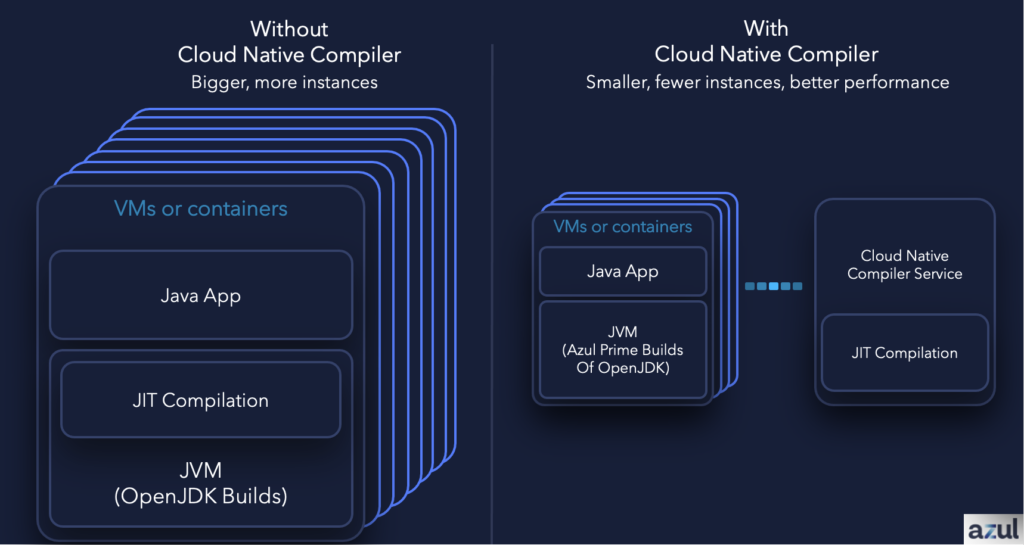Azul Adds K8s-Based Cloud Service to Compile Java
Azul today unfurled a cloud service that makes it possible to leverage a Kubernetes-based cloud service to accelerate the compilation of Java code.
Scott Sellers, Azul CEO, says Azul Intelligence Cloud offloads the Just-in-Time (JIT) compiler for the Java virtual machine (JVM) to a cloud service to boost the performance of Java applications. Compilation and optimization of Java code is now performed by a cloud-native compiler created by Azul that is being made available at no additional charge, he says.
Providers of alternative JVMs like Azul have been making a case for a lower-cost approach to running Java applications faster for several years. Azul’s cloud-native compiler strengthens that case in a way that is compatible with any Java application using Azul’s Platform Prime Java runtime, says Sellers.
Platform Prime is based on OpenJDK which is compatible with Oracle Java Standard Edition (SE). While distributions of OpenJDK have been around for years now, the fees Oracle charges for supporting Oracle Java SE have pushed many organizations to consider making the jump to OpenJDK to contain costs. Azul also offers migration services to facilitate that transition.
A recent Forrester Consulting study commissioned by Azul finds the Azul Zing JVM pays for itself in less than three months by reducing development and infrastructure costs, with a three-year 224% return on investment (ROI). Many Java applications are overprovisioned to compensate for the performance issues that arise from relying on legacy JVMs, adds Sellers.
Regardless of which open source instance of a Java platform organizations choose, it’s clear that going forward, most of the ongoing innovation is shifting to platforms to which multiple vendors are more frequently contributing. OpenJDK, for example, is now on an every-six-months release cadence.
While many other programming languages have gained the loyalty of developers, Java continues to be the programming language most often used by enterprise application developers. Less clear is the degree to which microservices-based applications constructed using containers are built using Java. Rather than waiting for those developers to become proficient in another programming language, there’s a natural tendency for organizations to want to stick with a familiar language. Microservices-based applications, however, are latency-sensitive so there’s a strong inclination for organizations to look for alternatives to existing JVMs and compilers.
That said, each additional language introduced into an IT environment tends to complicate DevOps processes and increase the total cost of IT.
Java isn’t going away any time soon, but after 25 years it’s clear that more developers are moving away from specializing and becoming proficient in multiple programming languages. In many cases, the front end of an application is written in one language while backend services are written in Java. As such, Java, in one form or another, will be around for at least another two decades or more.





